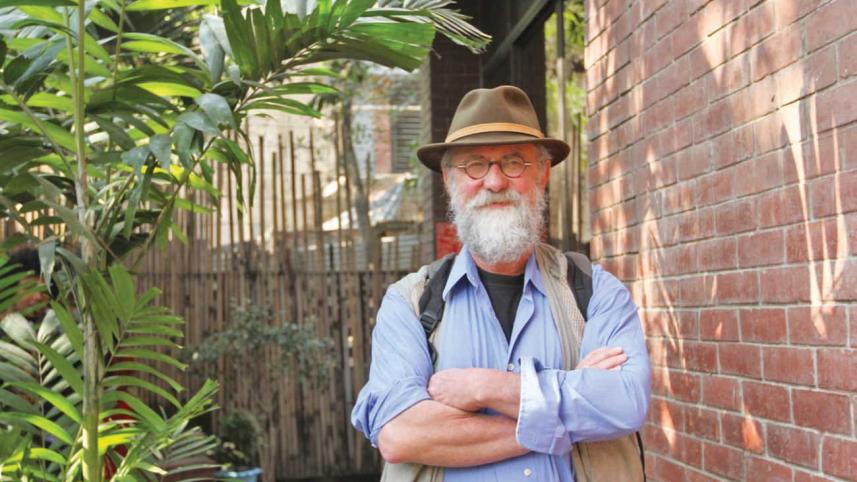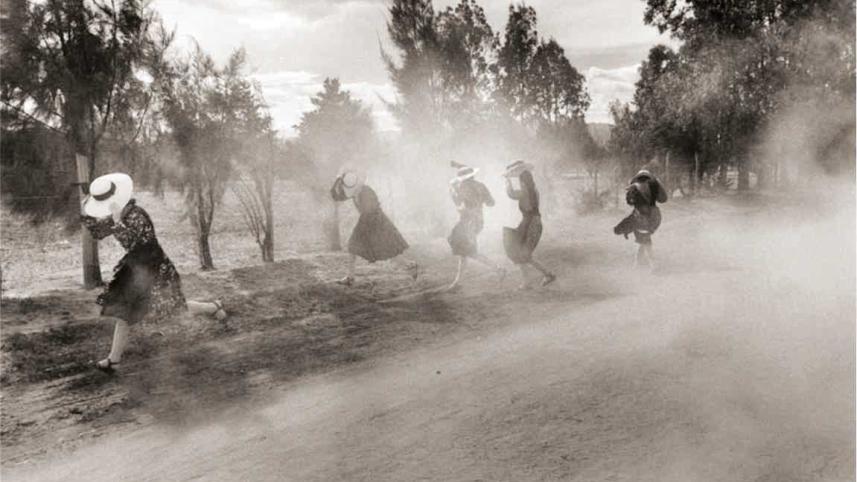Photography Gave Meaning to My Life

When and how did you start photography?
I wasn't serious about photography until I visited Central America in the early 1980s. I was studying visual arts on painting and sculpture at York University in Toronto.
Ronald Regan was the president of the United States of America back then. He seemed to be trying to transform all of Central America into a smouldering landscape. In other words, one could witness revolutions and unrests in Nicaragua, El Salvador and Guatemala.
Landless people were fighting to change the status quo of their native lands. These people were considered as threats by the US administration, which backed the repressive regimes of Central America and South America.
I went down to Nicaragua in 1984 to witness the on-goings there with my own eyes. There was a war going on there; the Nicaraguan rebels, known as Contras, funded by the United States, were fighting the ruling government. The main base of the Contras was at Honduras. These Nicaraguans were in exile who would cross the border from their base at Honduras to attack civilians and supporters of the government. We decided to interview the victims of these attacks, particularly rape survivors and relatives of the people who had been killed. The revolution was especially brutal and terrifying for civilians. That was my first and probably one of the most defining experiences as a photographer.
Was it a self-funded project?
At that time I tried to fund my own projects. I was only starting to learn how to use a camera. I tried selling my works. I had written a book 'Somoza's Last Stand' which was released. After I visited Guatemala, I wrote a book on the mothers of those who had disappeared, which also focused on the lives of the families of the people who had lost family members to the war. My first books were testimonies of those people, and also included photographs. Moreover, I also wrote a couple of books on poetry which included pictures. Thus, you can say that this was definitely a self-funded project.

You became a freelance photographer and writer in around 1984. Four years later you became a Magnum nominee. Your photographs dealt with the issues of exile, peace, rebellion and war. What drove you to focus on these issues in your pictures? How did you survive this era to emerge as a Magnum nominee?
Photography is an expensive profession. At around 1989, I was also teaching folk music on a part-time basis at night to supplement my insignificant income. And I was also applying for grants. I was able to sell some of my artworks but they didn't fetch much. My family and I were living as cheaply as we possibly could. We rented a house for $100 per month. We were growing our own food in the garden and re-freezing our food. I had built a stove and cut firewood. We did not have adequate money to spend on anything more than the absolute essential. However, as the saying goes 'If you want something, you need to make your own way.' And that's exactly what I did.
I became a photographer because photography is probably the best vehicle that gives you the sort of freedom and responsibility to travel anywhere you want without spending too much on anything. Camera was my instrument that allowed me to peek into people's lives, which in turn helped me earn a little money. Photography is a tool for documentation. The happenings around the world are far more interesting than what happens in an art studio in a small apartment. I wanted to experience that. I liked interacting with the people whose pictures I capture in my camera and even grew to admire them. Photography gave meaning to my life.
You have been involved in long-running projects, spanning around 10 to 12 years. How did you arrange your photographs during the editing process? Were they arranged based on the shoot or in a chronological manner or was it just a random rearrangement?
Photographs can never be arranged chronologically. If you are curating an exhibition, you arrange them in one way; if you are publishing a book, the photographs will be arranged in another way; if you are making a slide show, there is a different sort of arrangement for that. Arrangements of photographs don't always have the same format. They depend on the progression of the pictures as well as the medium that one is using. For example, if something that I captured in my camera related to an event I shot in 1999, I will place them in a similar order in a book. There is no chronology in terms of date or time.
What do want to capture when you are photographing? How do you approach strangers? What do you say to them?
Well every situation is different. If you are in the Gaza strip there is clash going between the natives there, including children, and the Israeli army. You cannot just stay there and indulge in long conversations. You have become a part of the scene. In cases where one is working with a worker, for example, one needs to initiate an intimate conversation and get to know them first. Every situation is different, so there is not one clear answer to your question. Everything depends on the nature of your work.

How do you feel about the digital cameras?
I don't like them much. I photograph in black and white. Because of the digital media, I have to shoot still photographs in colour for the very first time. I don't have any problem shooting videos or recording sounds digitally. But I'm not a big fan of digital cameras as of such.
When you were much younger, you wanted to be a creative writer and even went to an art school. Eventually you took on photography as your career. Interestingly your works have incorporated all your creative experiences – be it arts, visuals, music and of course, photography.
It takes while to realise your beckoning. At first, I wanted to be a visual artist then I wanted to be a writer. However, my interactions with people inspired me to take the direction that led me to my current profession. I also realised that I still wanted to be an artist, but an artist who will be in the centre of their work. I wanted to be an interpreter of people's experiences. I especially wanted to present those people who did not have any voice in the West.
I was nominated for the Magnum Awards in Photography in 1988, and after that I decided to pay all my attention to photography. My first book on El Salvador, was published in 1997 and it just contained photographs. I then moved on to work on a project on the Middle East and also did a project called The Mennonites.
I still write songs, though, and record music. At the moment I am combining some of these creative disciplines to create an art form that expresses my individual persona. All said and done, my main focus will always be on photography because it can truly be known as a vehicle for storytelling that an individual can experience and relate to.



 For all latest news, follow The Daily Star's Google News channel.
For all latest news, follow The Daily Star's Google News channel.
Comments